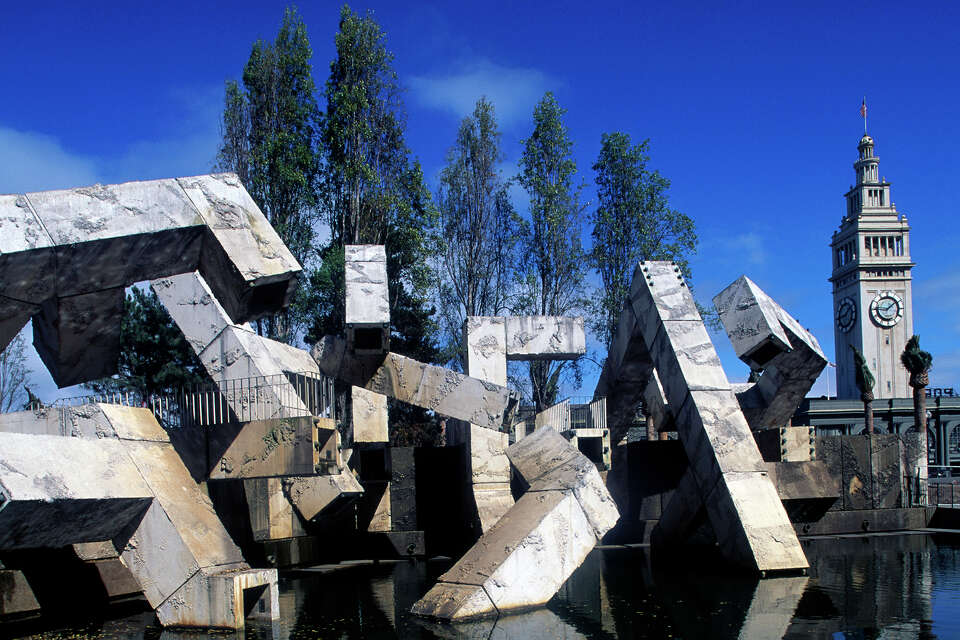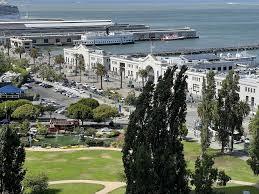After Decades of Controversy San Francisco Faces Tough Decision on Its Most Polarizing Public Monument
San Francisco is on the verge of a major transformation at its iconic Embarcadero Plaza, a move that could finally decide the fate of one of the city’s most talked-about and divisive public artworks. As plans take shape to replace the expansive concrete plaza with a lush waterfront park, the future of the brutalist Vaillancourt Fountain — a towering 40-foot-tall concrete structure weighing 700 tons — hangs in the balance.
A Bold Vision for Embarcadero Plaza’s Future
Last year, city leaders unveiled ambitious plans to revitalize Embarcadero Plaza and nearby Sue Bierman Park, promising a green oasis more than twice the size of Union Square. The proposed design envisions sweeping lawns, winding pathways, food trucks, and twinkling sculpture gardens aimed at drawing crowds back to the downtown waterfront area. The redevelopment, supported by a public-private partnership, received unanimous approval from the city’s Board of Supervisors in March, setting the stage for a $30 million overhaul.
But beneath the excitement, tensions have been simmering as longtime residents and artists raise concerns about what might be lost in the process.
Skateboarders Rally to Preserve a Historic Skate Spot
The plaza is not just a concrete slab—it is a historic landmark in the skateboarding world. For decades, it has served as a celebrated gathering place for Bay Area skaters and has earned global recognition as one of the best urban skate spots. When plans for the new park surfaced, skateboarders quickly voiced their fears that the city’s redevelopment would erase this cultural legacy.
Ted Barrow, a skateboarding historian, launched a petition demanding that the city and developers honor this heritage by preserving parts of the original brick surface and guaranteeing skateboarding will be allowed in the new park. The petition has gathered thousands of signatures, reflecting the strong local passion for keeping the plaza’s skateboarding roots alive.
The Artist’s Fight to Save the Vaillancourt Fountain
At the heart of the debate is the Vaillancourt Fountain, created by 95-year-old artist Armand Vaillancourt. The fountain, completed in 1971, has long been a symbol of bold, brutalist art—equally praised and criticized for its raw concrete forms. It survived the devastating 1989 Loma Prieta earthquake unscathed while nearby infrastructure crumbled.
Vaillancourt recently traveled from Montreal to San Francisco after learning his monumental work was missing from early plans and renderings of the new park. He pleaded with city officials to preserve the fountain, emphasizing its resilience and significance. “Let that artwork live forever,” he urged, highlighting the fountain’s cultural importance and survival through decades of change.
Maintenance Challenges and Mechanical Failures
Despite its artistic value, the fountain has faced numerous practical challenges. For over 50 years, the city’s Recreation and Park Department has managed the fountain’s complex mechanical systems, including pumps and water features that require near-daily upkeep. The aging infrastructure has been plagued by persistent leaks, drainage issues, and vandalism, including graffiti and discarded debris in the basin.
The fountain’s last operational pump failed in May of last year, rendering it completely inoperable. Extensive repairs or a full restoration would be necessary to bring the fountain back to life, a costly endeavor estimated to exceed $100,000 annually in maintenance expenses alone.
A Fountain Steeped in History and Controversy
The fountain’s origins are as intriguing as its future. Commissioned after a 1967 international competition, Vaillancourt’s piece was unofficially titled “Québec Libre!”—a nod to the Quebec sovereignty movement and a phrase famously uttered by former French President Charles de Gaulle during a Montreal visit. The artist even painted the phrase on the fountain the night before its debut, adding to its rebellious character.
Over the years, the fountain has sparked heated debates. In 1987, U2’s Bono spray-painted graffiti on it during a surprise concert, provoking outrage from city officials. Critics have described it as ugly or bizarre, while others, including notable architects, have praised its daring design and cultural significance.
What Lies Ahead for Embarcadero Plaza and the Fountain
City officials acknowledge the complexity of balancing public art preservation with urban renewal goals. No final design has been confirmed, and public input continues to shape the project. Plans for the park’s completion remain ambitious, with a price tag nearing $30 million, but decisions about the fountain’s fate—whether it will be relocated, restored, or stored—are yet to be made.
A second community meeting is expected this summer, offering residents, artists, and advocates another opportunity to weigh in. For now, the city remains in dialogue with Vaillancourt and his supporters, listening carefully to their perspectives.
The Crossroads of History and Progress
The story of the Vaillancourt Fountain and Embarcadero Plaza captures a broader tension familiar to many cities—how to honor cultural heritage while embracing change. This public monument, bold and unyielding, stands as a testament to the city’s artistic spirit and resilience. Whether it remains a landmark or becomes a memory, its legacy will continue to inspire conversations about the soul of San Francisco’s urban landscape for years to come.

